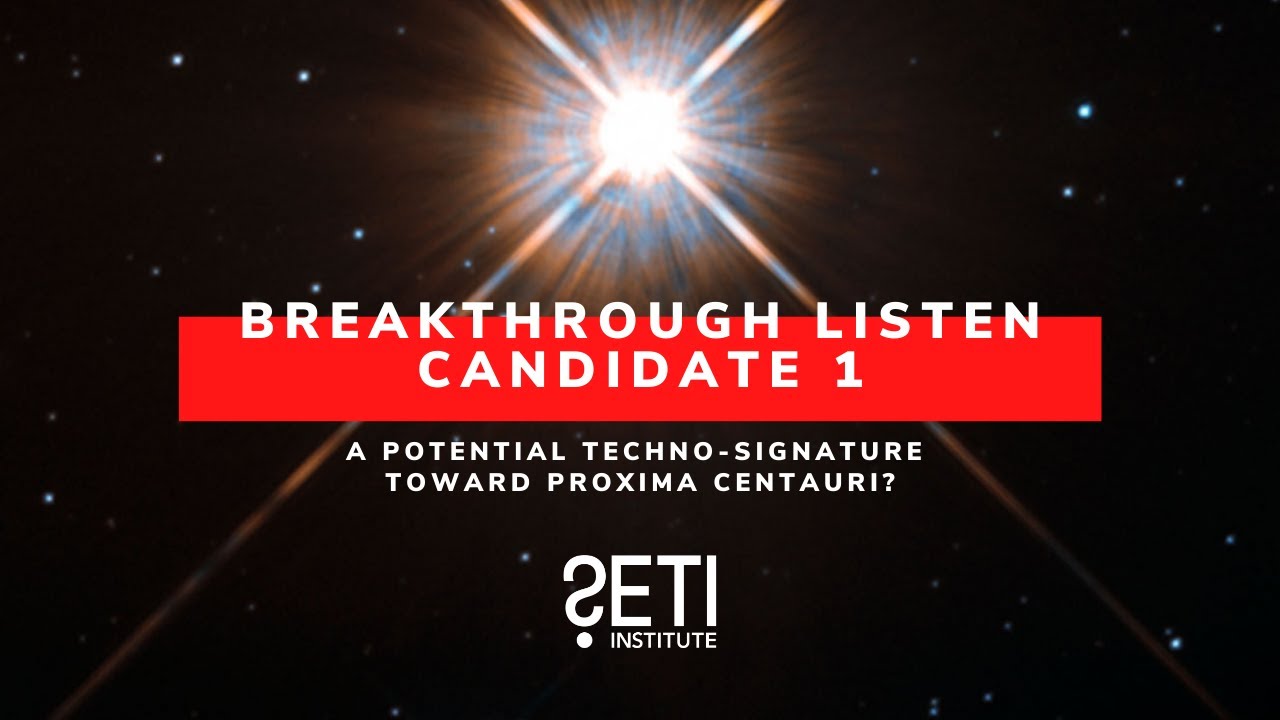On 2019-04-29, the Parkes radio telescope in Australia was observing the closest star, Proxima Centauri, to study its flare behaviour. The Breakthrough Listen project was conducting a piggy-back analysis of the signals, filtering for narrow-band emissions which might indicate transmissions from a technological civilisation. A signal was received, persisting for two and a half hours, which passed all of the tests for such a signal:
- It is a ~Hz-wide narrowband signal, which cannot be created by any known or foreseeable astrophysical system, only by technology.
- It exhibits a non-zero drift rate, as expected for a transmitter that was not on the surface of the Earth.
- Its drift rate appears approximately linear in each 30 min ‘panel’ (one single-target observation from a cadence of observations that makes up a waterfall plot), but the drift rate changes smoothly over time, as expected for a transmitter in a rotational/orbital environment.
- It is absent in the off-source observations (see ‘Initial investigation and parametrization of blc1’), as expected for a signal that is localized on the sky.
- It persists over several hours, making it unlike other interferers from artificial satellites or aircraft that we have observed before.
The signal was declared a “candidate” by Breakthrough Listen and given the name “blc1” for Breakthrough Listen Candidate 1”. Two papers published in the 2021-10-25 issue of Nature Astronomy:
- “A radio technosignature search towards Proxima Centauri resulting in a signal of interest”
- “Analysis of the Breakthrough Listen signal of interest blc1 with a technosignature verification framework”
have now concluded that the signal was likely terrestrial interference. From the abstract of the second paper:
… [W]e find that blc1 is not an extraterrestrial technosignature, but rather an electronically drifting intermodulation product of local, time-varying interferers aligned with the observing cadence. We find dozens of instances of radio interference with similar morphologies to blc1 at frequencies harmonically related to common clock oscillators.
A popular “front of book” article in the same issue with the somewhat sensational title “Mysterious ‘alien beacon’ was false alarm” summarises the results. The actual source of the signal has not been identified, and the signal has never been observed since.
Here is an interview with Shane Smith, the Hillsdale College undergraduate intern at the Berkeley SETI project, who discovered the signal in the Parkes data.
